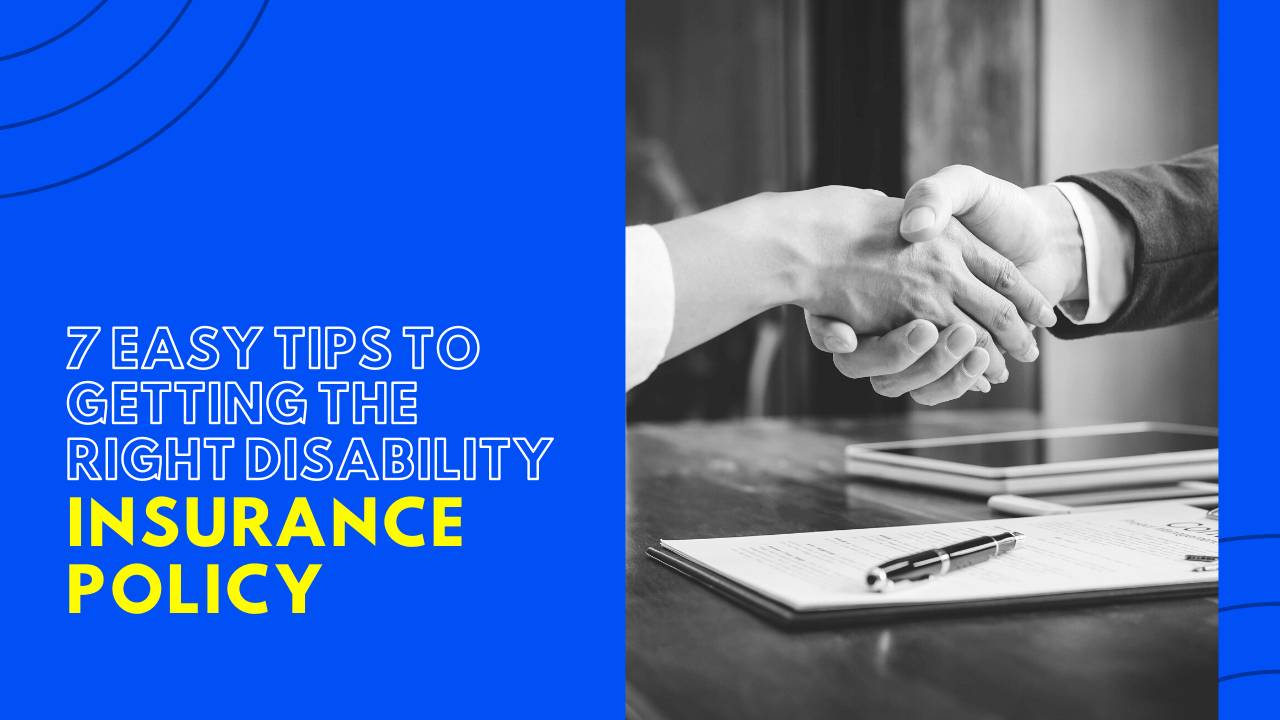You’ve heard of health and life insurance policies, but another popular form of coverage that is becoming popular today is disability insurance.
This type of financial protection is intended to offset the expenses that occur if you become unable to work due to an injury or illness. This can be for a short-term or long-term period, depending on the terms of your policy.
Disability insurance is financially prudent for those who live paycheck to paycheck or who want to buffer between their pocket and medical expenses. Here are seven easy tips to help you decide which policy is right for you.

1. Check the Type of Policy
There are two main types of disability insurance: short-term and long-term. Both of these coverages have advantages and disadvantages that you should be aware of before you choose.
Don’t plan based on premium; look into the fine print so you know what you’re paying for.
Short Term vs. Long Term Coverage
The disability insurance policy you pay for may have different coverage terms. As a general expectation, short-term disability insurance includes:
- A replacement of between 60 and 70% of your base salary
- Coverage payouts of anywhere from three months to one year
- A waiting period before benefits take effect, typically two weeks after the injury is diagnosed
Long-term coverage, on the other hand, includes benefits such as:
- A replacement of only 40 to 60% of your base salary
- A termination date of benefits when the disability is considered resolved
- Long-term disability payouts for permanent conditions, with a termination date specified in the policy
- A waiting period of 90 days after the disability is diagnosed; sometimes this waiting period is slightly longer or shorter
Check your policy’s fine print for these factors and make sure you understand them before you sign.
2. Research the Company’s Reputability
Not all insurance companies are reputable or have a solid financial foundation. It’s not unheard of for some companies to become insolvent, and the premiums you paid for years are wasted when you need them.
To verify the company’s reputability, check AM Best Company, Moody’s, or Standard & Poors.
3. Know the Definitions
It’s always the little details that seem to get you when it comes to contracts and policies. In the world of insurance coverage, terms like “total disability” are ambiguous.
What’s considered “total” to a physician might not be accepted by the insurance company’s definition. Some policies modify this as far as the policyholder’s ability to perform “gainful employment” versus their own occupation.
The most common definitions include “own-occ,” “modified own-occ,” and “gainful occupation.” Ask for clarification as to which terms are included in your policy.
4. Opt for the Riders
There is a reason why many policies come with optional riders. It’s because these frequently come in handy for the policyholder but are more expensive for the insurance carrier.
When it comes to disability policies, yours might be “illness only.” If that’s the case, make sure you invest the extra few dollars and get an accident rider. Unexpected complications from an accident are often the most impactful on your income.
Chronic illnesses usually allow you to keep working through them for a little while. But a partial disability rider can compensate for missed work if it is because of a disability covered.
5. Take Advantage of Your Youth and Health
Health, life, and disability insurance premiums are almost always cheaper when you’re younger and in good health. But this is when you want to take advantage of those lower prices and add on riders before you need them.
A “future increase option” rider lets you invest in extra coverage for an increase in your annual wages before you make them. When your income goes up, the percentage of the insurance company’s payout should you need it rises, too.
This comes with a natural bump in your premiums, unless you’ve proactively included the future increase option rider. You can get more coverage as you get older without a higher premium.
6. Don’t Wait Until It’s Too Late
By the time many people see the need for disability insurance coverage, it’s too late. They’ve already been diagnosed with a serious medical condition. These pre-existing illnesses and injuries will limit which policies and what coverage you can get. They’ll also cost you significantly more in monthly premiums.
Some insurance carriers offer “graded risk” disability policies. These are for people with serious illnesses or injuries. They are “better than nothing” policies that give you more benefits the longer you are working and not using them.
7. Err on the Side of “Too Much” Coverage
If the difference in your monthly premium is less than you’d spend for a splurge at a restaurant, consider going for the higher coverage. Make sure the carrier is reputable and that you understand all the terms and exclusions.
For the most part, most disability insurances are legitimate.
They may have a few discrepancies in what they offer, but if you’re good with the coverage, don’t spend a long time deliberating. Any coverage is better than none, and “too much” is always better than not enough!
Conclusion
Most disability insurance policies are similar, but make sure you check the details and fine print so you know what you’re paying for. These tips will guide you through the most important aspects of insurance shopping!
 Infographic Portal New Infographics Resource Portal
Infographic Portal New Infographics Resource Portal
